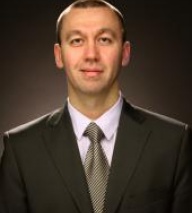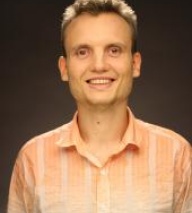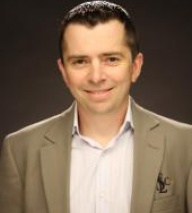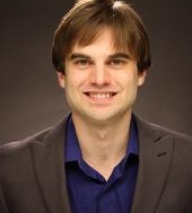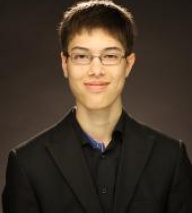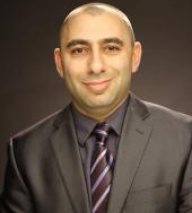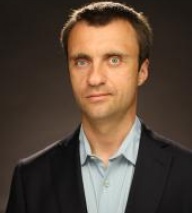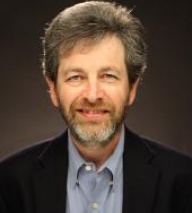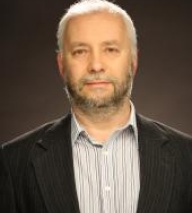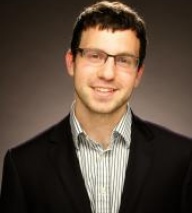2013 U.S. Championship Player Bios
Gata Kamsky
Gata Kamsky defected to the United States in 1989 after a trip to the New York Open that year. Lev Alburt, who helped Gata defect, soon got a call from the Russian Grandmaster Genna Sosonko: "You got yourself a new World Champion!" Kamsky's potential to earn the ultimate crown nearly became actualized when he beat Kramnik in a match, qualifying him to play Karpov for the World Championship title. He was the first American since Fischer to go that far, and although he lost the match, he was still number three in the World. He then made a shocking announcement. Gata was leaving chess, to become a doctor--where he could earn more money.
For five years Gata lived up to his promise and did not play a rated game. He earned an undergrad pre-med degree in chemistry, but then changed his mind and applied to law school. After graduating, Kamsky realized how much he missed chess. Egged on by friends and fans, he decided to give chess another try. "Now I feel much less pressure. I play for myself only."
"I could make more money as an attorney," said Gata, "I came back to chess to try to win the World Championship." Kamsky does not regret his hiatus. "I learned so much about life in those six years," he said. "Before, I knew so little about how the world works." His career restarted with a surprise appearance at the New York Masters. Thereafter, Gata revealed that he was preparing for top-flight competitive play. He had solid but unremarkable performances in his first few outings, and the first hint that Kamsky was really back was at the 2005 World Cup. He defeated one elite player after another (including former World Champion Alexander Khalifman), earning a spot in the next World Championship cycle. He had another astonishing performance in a super-grandmaster tournament in Sofia, May 2006, when he defeated Vishy Anand with the black pieces, and placed second in a star-studded field that included World Champion Veselin Topalov.
In late 2007, Gata Kamsky made a serious step toward his primary goal. He won the World Cup (Khanty-Mansiysk, Nov.24-Dec.17), defeating Peter Svidler, Ruslan Ponomariov and Magnus Carlsen along the way to the final, where he faced Alexei Shirov. He defeated Alexei Shirov 2.5-1.5. Kamsky lost to Topalov in the 2008 match in Sofia, Bulgaria, but last May, he got his revenge by upsetting Topalov in a Candidates Match. He eventually lost to GM Boris Gelfand in the semi-finals. A very solid player and determined fighter, Gata does not lose too often, but he doesn't have the wild streak of a Nakamura or Shabalov that is particularly suited to rolling through American Swisses. Since his comeback, he's played a variety of openings. Most frequently played are the Kan Sicilian, the Slav, the black side of the Ruy and 1.e4.
Timur Gareev
Originally from Uzbekistan, Grandmaster Timur Gareev is a formidable opponent with unlimited potential. Coming off an undefeated, first-place performance at the 2012 North American Open, Gareev has proven that he has the ability to make a serious run at the U.S. Championship title.
"My grandfather taught me how to play chess at the age of four," Gareev said. "I practiced the game regularly challenging my father, friends, and schoolmates. At the age of eight I played my first rated competition. I started succeeding in my improvement very fast winning most of the national events."
At the age of 10, Timur said he was playing expert level strength, dedicating 4-6 hours every day mastering the game on his own and working with his coach Georgi Borisenko.
"Soviet Master Borisenko had coached and collaborated with World prominent grandmasters and world champions including Nona Gaprindashvilli, Semen Furhman, Mark Taimanov, Naum Rashkovsky," Gareev said. "It was an honor to receive the knowledge of classical chess school. At the age of 12, I went for my first serious international event and conquered the title of Asian Champion U-14 years old at Bikaner, India."
In 2004 at the age of 16, he earned the distinction as the youngest-ever grandmaster from Asia. He traveled to the United States for school and joined the chess team at the University of Texas at Brownsville's from August 2005 to August 2006 where he helped the team win its first national championship. In 2007 he tied for 1st with Vladimir Egin and Anton Filippov in the Uzbekistani Chess Championship. Gareev studied Business & Accounting at the University of Texas at Brownsville, where he received his B.A. degree in 2011. He was awarded the Samford Fellowship last year, which awarded him a monetary stipend to assist his chess development.
Timur is an exceptional blindfold player, and he recently conducted a 27-board blindfold simul in Hawaii. He is still training to conduct an even larger simul, and he has been quoted as saying that blindfold training has helped him improve his focus.
Image courtesy Wikimedia commons user Luciana Morales
Alexander Onischuk
Alexander Onischuk called winning the 2006 U.S Championship the happiest day of his life. Not that he's unused to winning. Alex placed first in more than 20 tournaments, from super strong Round Robins in exotic Beijing and chilly Siberia to the 2000 Ukrainian Championship. Alex became a GM in 1994 at the age of 19, but this hardly qualified among his happiest moments, because that was a matter of "when, not if."
He is known for his professional, solid style, and is repertoire is very well analyzed, but it is also more predictable than most top U.S. players. Some of his lines as Black (particularly in Double King Pawn games) allow a weaker but well-prepared opponent to force a draw. Such a strategy makes it hard to win clear first in a Swiss, which usually requires a huge plus score.
Alex ran into a typical roadblock at his first U.S. Championship, where he placed eighth. One opponent traded queens into a dead draw, following a previous game by Alex. The advantage of having a stable opening repertoire is that you're bound to know the strategies and details of your lines better than if you played four different openings.
Alex thinks that what separates him from Grandmasters of a slightly lower stature is his superior understanding of the game, gained from working with elite players, including former World Champions Anatoly Karpov and Veselin Topalov. In addition to seconding Karpov in matches against Anand (1997) and training him for his victorious match against Kasparov (2002), Alex got the chance to play blitz with the Russian legend. "The first time we played" Alex said, "I won with black, and thought I'd do pretty well. Then I lost 25 games in a row. I was already a GM and didn't think I could lose 25 games in a row to anyone!"
For five years he played for the championship college team at the University of Maryland Baltimore Country (UMBC) and graduated in the spring of '06 with a degree in linguistics. Onischuk is now the head coach of Texas Tech University's nationally recognized chess program.
If he could play any champion from history, he would play Paul Morphy. "I'd play 1...e5, and he'd go for the King's Gambit," he said. "I'd probably lose."
Sam Shankland
When Sam Shankland was just 18, he announced he would be retiring from the game of chess. In order to honor his previous commitments, however, he agreed to play in one more event, the 2010 U.S. Junior Closed Championship, which he managed to win after facing back-to-back playoff matches against Parker Zhao and tourney favorite GM Ray Robson. That achievement offered him an automatic invitation to play in the 2011 U.S. Championship, which ultimately proved to be a difficult offer to refuse.
Sam performed admirably at the 2011 U.S. Championship, edging veteran GM Alexander Onischuk in a playoff to reach the four-player quad finals. There he ran into eventual champion GM Gata Kamsky, who topped him 1.5-.5. After his defeat, Shankland remained upbeat.
“Just because I’m not in the running for first place doesn’t mean the tournament is over,” he said. “Plus third place sounds cooler than fourth. You can call it a bronze medal.” Shankland's positive attitude proved prescient as he toipped GM Robert Hess in a playoff for third place.
Shankland won a gold medal for the USA at the 2008 World Youth Championship in Vietnam, and the Brandeis University student has called the U.S. Championship "his dream tournament for the year." Sam also qualified to play in the 2009 U.S. Championship after winning the final match of the Tournament of State Champions. He also was recently awarded the Samford Chess Fellowship, which will afford him a full year to focus on and fine-tune his skills.
Because of his usually strong, but sometimes unpredictable, play, he is an intriguing player to watch at this year's championship.
Ray Robson
Ray Robson is a member of the Webster University chess team that recently captured the 2013 national collegiate chess championship. Ray learned chess at age 3 and has earned seven national scholastic titles since. Robson finished in the top 10 at the World Youth Championship from 2004 to 2007 and won Super Nationals in 2005. He defeated his first Grandmaster in 2006, the same year he earned the USCF National Master title.
He's the youngest GM in the U.S. and is widely considered to be America's brightest hope to become an elite GM since Hikaru Nakamura. In fact, Ray broke Hikaru's record and currently holds the title as the youngest-ever American Grandmaster, fulfilling the requirements about two weeks prior to his 15th birthday.
Ray's first-ever major open tournament win came in 2008 at the Miami Open. He received his first norm in Tromso, Norway in August of 2009, and he earned his second in Skokie, Illinois that same month. He earned his last GM norm in Montevideo, Uruguay in October 2009.
He has turned in a number of impressive performances as of late and appears poised to make a statement at this year's championship.
Varuzhan Akobian
The weather was so harsh in the years that Armenian-American Grandmaster Varuzhan Akobian spent in Mongolia, that his father forbade "Var" and his sister Armine, from playing outside. He taught them chess, a perfect indoor distraction. "From the very beginning" Var says, "I was different from other chess kids. It was never just a game for me. I always wanted to be a Grandmaster, and knew that I would do what it takes." As a teenager living in Yerevan, the capital of Armenia, Varuzhan spent all day playing chess and soccer. His teachers agreed that he could focus on chess, without fear of truancy charges. "This is one way in which Armenia is very different from the United States. If I went to high school here, I never could have spent so much energy on chess."
Varuzhan Akobian qualified to play his first rated tournament, the Armenian Junior Chess Championship in 1992, earning third place in the under 10 section, then went on to take first place the following year. He participated in his first World Chess Championship in Czechoslovakia at the age of 9 and placed eighth.
Varuzhan excels in positional battles and admires the games and style of Armenian hero, World Champion Tigran Petrosian. Var's favorite Black opening, just like Petrosian, is the French Defense. Var's advice to players aspiring to improve is this: "Don't expect to see constant improvement. You build knowledge and work hard, and after a while, you'll see a big breakthrough."
In 2002, Varuzhan won the Samford Chess Fellowship, which allows a talented junior to focus on chess for two years. The prize paid off quickly, as he tied for first in the 2002 World Open and also won the Irme Koenig GM Invitational. The following year, Akobian scored 8/9 to win the 2003 U.S. Junior Closed Championship, winning his first seven games. He was officially awarded the Grandmaster title in June 2004, after which he won the World Open again, clinching it with a sparkling win against Alexander Shabalov. Varuzhan is the first person in the 21st century to win clear first in the World Open (without having to play a blitz playoff).
Recently, GM Akobian moved from sunny California to Topeka, Kansas, where his wife is attending law school at Washburn University. He has joined the Resident GM rotation at the Chess Club and Schoalstic Center of Saint Louis, which brings some of the country's top players to the Chess Club to give private lessons, present lectures and share their chess knowledge witht the club's more than 900 members.
Alexander Stripunsky
Alexander Stripunsky has picked up almost 40 rating points since the 2011 U.S. Championship and will enter the field with his highest-ever USCF rating.
Stripunsky has an excellent record in U.S. Championships, having competed in six. In 2006 he had a strong run, tying for 3rd place. He gained respect as one of America’s elite Grandmasters in the 2005 U.S. Championship, where he won a beautiful last round game against Alexander Goldin, tying for first. His fabulous tournament came to an end when he lost to Hikaru Nakamura in the playoff match.
In 2010, Stripunsky returned to the U.S. Championships after just missing out on qualifying the previous two years, and turned in a solid performance, finishing 6th out of 24 participants. He will be looking to improve upon his 2011 tournament performance, where he finished second-to-last in his qualifying group.
Stripunsky is disciplined when it comes to his chess career; he runs regularly and works hard at the board. He also appreciates the aesthetic power of chess, “The more you play, the more beauty you are able to see.”
A mainstay in American chess, Stripunsky will compete in his seventh U.S. Championship this year.
Gregory Kaidanov
Gregory Kaidanov's first major win came in a Moscow tournament in 1987, and he was awarded the Grandmaster title a year later. Kaidanov moved to the U.S. in 1991. He's racked up a number of tournament championships. Kaidanov was a member of the silver Olympiad team in Russia in 1998, won a silver board medal at the Calvia, Spain Olympiad in 2004 and was a member of the bronze medal Olympiad team in 2006. Kaidanov is one of America's premiere chess coaches. In 2008, he coached the U.S. team to a bronze medal finish at the Women's Olympiad.
Gregory emigrated from Ukraine to the U.S. in 1991, with his three children and wife, to Lexington, Kentucky. Lexington is hardly the epicenter of American chess. How did Kaidanov end up there?
Gregory's first day in America was on a visit in the summer of 1990, in the pre-Guiliani New York, when the city was notorious for a high crime rate. He and his wife were robbed twice in one day! In addition to his savings, he lost 10 years worth of chess analysis. He was devastated. Fortunately, he did not follow his first instinct to give up on the U.S.A. His friend GM Dmitry Gurevich invited him to Chicago, after which Dmitry helped connect Kaidanov with chess organizer Ken Troutman. Troutman organized a series of chess exhibitions for Gregory in Lexington, and sponsored his U.S visa. Rattled from his first traumatic days in New York, he was particularly impressed by the safety in Kentucky.
He barely unpacked his unstolen bags, when he began steam-rolling the U.S Open chess circuit. He won the 1992 World Open in Philly and the 1992 U.S Open. Greg's great first year performances helped develop the "honeymoon theory", that Grandmaster emigrates fare fantastically during their first year in the U.S.A. A decade after his streak, he started an equally amazing one. It began at the 2002 Aeroflot Open in Moscow, sponsored by the eponymous Russian airline. Kaidanov prevailed over 82 (!) other GMs in one of the strongest fields ever assembled.
Kaidanov was born in Ukraine, where his dad taught him the rules of chess at six years old. According to Greg, it's a common American myth that chess was a part of the daily Soviet school curriculum. Still, he's nostalgic for his childhood chess days, where he played after school for hours on end. Gregory was not a teenaged prodigy. His success came after two decades of solid hard work. His first major tournament win came in Moscow 1987, where he crushed Indian star Vishy Anand. He earned the IM title that same year, and was awarded the GM title just a year later in 1988.
Kaidanov is also the most active Grandmaster teacher in America. He travels from Louisiana to California, coaching, giving lectures and conducting simultaneous exhibitions. He is the head coach of the www.uschessschool.com founded in 2006 by IM Greg Shahade. Several times a year, players from all over the country meet up for a one-week intensive training session in Kaidanov's current hometown, Lexington.
After a quick bowl of Raisin brain, Gregory often works on chess alone, or with a student, for 12 hours straight. The ability to study and coach chess for such long hours come from a deep love for the game, and for sharing. “I would never give up coaching, even if the money meant nothing to me." His students range from serious amateurs of all ages to Maurice Ashley, who Kaidanov helped become the first ever African American GM. Kaidanov had a great success in the 2008 Women's Olympiad, where he coached the U.S. team to a bronze medal finish. He is also a frequent coach at the U.S. Chess School.
Despite Kaidanov's many tournament wins and high ranking among U.S players, he has never won a U.S Championship. Students all over the country are rooting for Greg to take his place among the gallery of U.S Champions.
Alexander Ivanov
The Boston-based Grandmaster, Alexander Ivanov is known for being a fantastic calculator and a loyal supporter of his favorite openings. He’s played the same sharp openings (1.e4 Main Lines in the Ruy and the Open Sicilian, Nimzo and Bogos against 1.d4 and the Zaitsev defense and an occasional Modern against 1.e4.) for his entire career, making him somewhat predictable but very dangerous. He knows his stuff so well that an opening error in his territory will be swiftly punished.
Despite opening knowledge which often stretches past move 20, Alex often gets into terrible time pressure, against fellow GMs and amateurs. Alex is obsessed with making perfect moves, even when his search doesn’t give him the best practical chance of winning a game. Despite this sometimes fatal perfectionist streak, Alex is consistently among the top 20 players in America. Whether he would be higher ranked without this weakness has been a subject of debate for the past 20 years.
When calculating many moves ahead, the actual board is distracting for some professionals, because analysis places the pieces in different spots than their current posts. Alex deals with this by staring up at the ceiling, as if in a trance. In between moves, he paces also staring at the ceiling. This peculiar habit is shared by a few of the top players in the world, most notably Alexei Shirov and Vassily Ivanchuk.
Alex has won his share of open and international events, highlights of which are his victory in the 1998 Pan-Am Championship and joint first in the 1995 U.S. Championship. He moved to America in 1988 with his wife, WIM Esther Epstein. They live in Newton, Massachusetts.
Robert Hess
Grandmaster Robert Hess is one of a handful of promising young stars on the U.S. chess scene. Hess was awarded the International Master title in 2007. He achieved his first norm for the Grandmaster title in Foxwoods 2008 and earned the final two in quick succession at the SPICE Spring Invitational and Foxwoods 2009.
Two years ago, Hess was awarded the Samford Chess Fellowship, and he is currently finishing up his sophomore at Yale University. Although handling a full course load at Yale, playing in top level tourneys across the country and studying for chess/classes can be time consuming, Hess has found time to also help spearhead the Sports Quotient, an exciting new sports website that offers intriguing stories and innovative coverage of the sports world.
Robert swept the 2009 High School Championship in Nashville, where he also led his high school, Stuyvesant, to a team victory. After being awarded a wild card berth to the 2009 U.S. Championship, Robert, originally seeded 17 out of 24 players, put on a remarkable performance to fall just short of the championship with a second-place finish. In 2011, he turned in an amazing performance to make it to the four-player knockout final, where he ran into a roadblock, ultimately securing a fourth-place finish.
Robert strives to play innovative and creative games, a trait that makes him a dangerous competitor. Like Bobby Fischer, Robert dislikes the prevalence of memorizing lines of theory too deeply. Rather, he strives to introduce theoretical novelties that bring his opponents out of book. He is a big proponent of Fischer Random chess (or Chess 960, a variation of chess that randomizes the back row with a few rules and guidelines. Under these rules, there are 960 different back-row configurations).
For the past 11 years, Hess has been under the tutelage of GM Miron Sher.
In his advice for developing chess students, Robert says to avoid using the computer too much, try to play up a section or two, and try doing other things besides chess as you develop.

